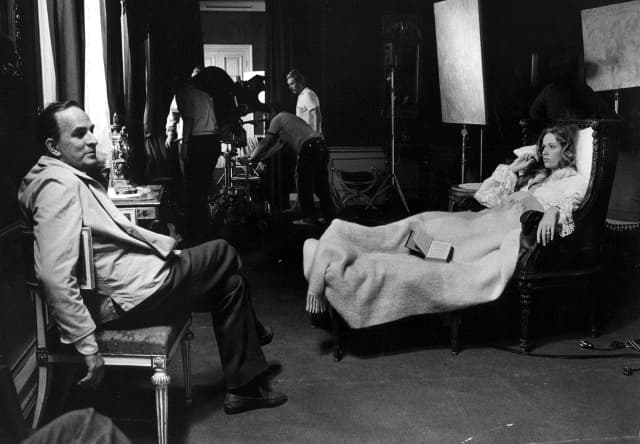The Local's Swedish film of the month: Cries and Whispers

Film writer Peter Larkin reviews Ingmar Bergman's film Cries and Whispers.
Ingmar Bergman directed roughly 70 films between 1946 and 2003. He died aged 89 in 2007.
Cries and Whispers (1972) is about three sisters and their maid in a mansion outside of Stockholm at the end of the 19th century. One of the sisters, Agnes (Harriet Andersson), is dying.
Her sisters Maria (Liv Ullmann) and Karin (Ingrid Thulin) watch helplessly, as does Anna (Kari Sylwan), the maid whose own daughter died at an early age. Anna is the only one to give Agnes comfort in her final days.
The film is notable for Bergman's use of red walls and saturated colour, crimson in particular which heightens the calm and often hysterical intensity of the scenes.
Bergman's period setting, plot and characters will remind viewers of the work of playwright Anton Chekhov.
Chopin and Bach on soundtrack give a lyrical presence to the film, filled with sorrow and poetic injustice. The influence on Lars von Trier's films is evident through the use of deeply troubled female characters.
READ ALSO: 30 Swedish movies to add to your must-see list
The film received great acclaim, winning an Oscar for Best Cinematography, Best Film and Actress for Harriet Andersson at the Guldbagge Awards and the Technical Grand Prize at the Cannes Film Festival.
The film is a must for Bergman fans.
Peter Larkin is an Irish film writer currently based in Sweden. Read his blog here.
Comments
See Also
Ingmar Bergman directed roughly 70 films between 1946 and 2003. He died aged 89 in 2007.
Cries and Whispers (1972) is about three sisters and their maid in a mansion outside of Stockholm at the end of the 19th century. One of the sisters, Agnes (Harriet Andersson), is dying.
Her sisters Maria (Liv Ullmann) and Karin (Ingrid Thulin) watch helplessly, as does Anna (Kari Sylwan), the maid whose own daughter died at an early age. Anna is the only one to give Agnes comfort in her final days.
The film is notable for Bergman's use of red walls and saturated colour, crimson in particular which heightens the calm and often hysterical intensity of the scenes.
Bergman's period setting, plot and characters will remind viewers of the work of playwright Anton Chekhov.
Chopin and Bach on soundtrack give a lyrical presence to the film, filled with sorrow and poetic injustice. The influence on Lars von Trier's films is evident through the use of deeply troubled female characters.
READ ALSO: 30 Swedish movies to add to your must-see list
The film received great acclaim, winning an Oscar for Best Cinematography, Best Film and Actress for Harriet Andersson at the Guldbagge Awards and the Technical Grand Prize at the Cannes Film Festival.
The film is a must for Bergman fans.
Peter Larkin is an Irish film writer currently based in Sweden. Read his blog here.
Join the conversation in our comments section below. Share your own views and experience and if you have a question or suggestion for our journalists then email us at [email protected].
Please keep comments civil, constructive and on topic – and make sure to read our terms of use before getting involved.
Please log in here to leave a comment.